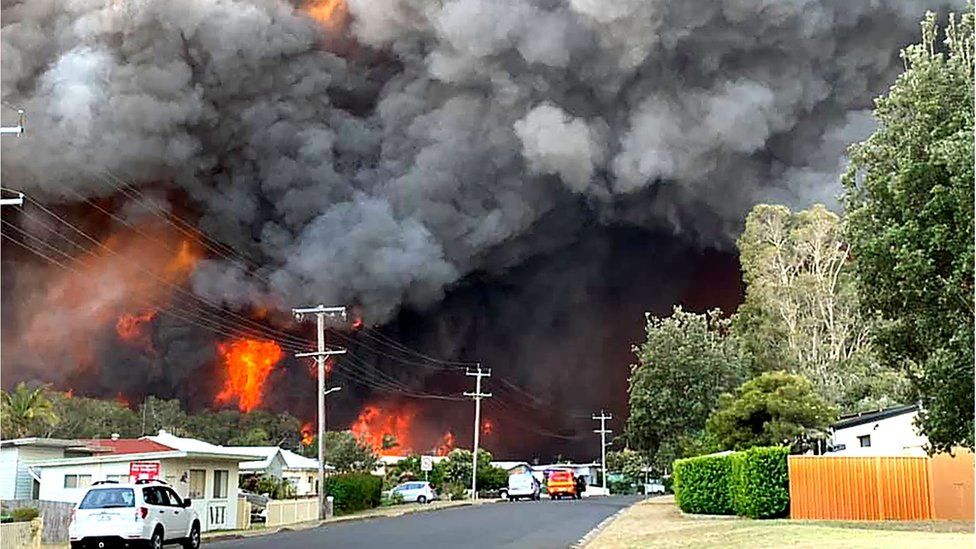Planning for Security: Creating an Efficient Bushfire Management Plan
Planning for Security: Creating an Efficient Bushfire Management Plan
Blog Article
The Value of Bushfire Management in Fire Protection
In the world of fire defense, the relevance of effective bushfire management can not be underrated. As neighborhoods globally grapple with boosting instances of wildfires, the aggressive technique to stop and reducing these all-natural disasters through critical bushfire management techniques has actually arised as a vital element. Past the instant risk to human life and home, the interaction in between bushfire administration and environmental conservation, area participation, and climate modification postures complex obstacles that need detailed solutions.
Value of Proactive Bushfire Avoidance
Proactive bushfire prevention strategies are vital in mitigating the devastating influences of wildfires on neighborhoods and environments. One essential facet of proactive bushfire avoidance is gas administration.
Informing the public on fire security methods and advertising neighborhood recognition about the relevance of bushfire avoidance are crucial components of proactive methods. Inevitably, aggressive bushfire prevention plays a substantial role in safeguarding neighborhoods and ecosystems from the harmful influences of wildfires.
Duty of Community Interaction in Fire Security
Involving the area in fire security initiatives is essential to improving the effectiveness of proactive bushfire avoidance approaches. Neighborhood interaction plays an important role in fostering a collective understanding of the risks posed by bushfires and the significance of preparedness actions. By including local residents, authorities can disseminate important information ablaze safety practices, evacuation treatments, and early warning systems, empowering people to take aggressive actions to secure their residential properties and lives.
By cultivating a society of readiness and partnership, communities can strengthen their ability to respond successfully to bushfire emergencies, reducing the impact on residential or commercial properties and lives. Ultimately, neighborhood interaction is a keystone of thorough fire protection strategies, emphasizing the relevance of collective action in safeguarding vulnerable locations from the risk of bushfires.
Significance of Wild Animals Preservation in Bushfire Administration
Conservation of wild animals plays a vital role in effective bushfire administration techniques, ensuring the security of diverse ecosystems and biodiversity in fire-prone areas. Wildlife conservation is important as it adds to the general durability of communities, assisting in their ability to recover and withstand from the effect of bushfires. By conserving habitats and shielding numerous types, the all-natural balance within these ecological communities is preserved, which is important for their lasting health and wellness and sustainability.
Furthermore, wildlife conservation additionally assists in minimizing the risk and intensity of bushfires. Healthy and balanced ecosystems with well-preserved wildlife populations can function as all-natural firebreaks, decreasing the spread of fires and limiting their harmful capacity (BAL Report). Specific pet species, like burrowing pets or birds that spread out seeds, play one-of-a-kind roles in avoiding fires or assisting in the post-fire regeneration of habitats
Integrating wildlife conservation right into bushfire monitoring strategies is not only crucial for securing biodiversity but also for promoting the general health and wellness and durability of ecosystems when faced with boosting fire hazards.
Benefits of Strategic Gas Decrease Programs
Strategically implementing fuel discover here reduction programs is crucial in reducing the risk and impact of bushfires in fire-prone areas. These programs include controlled burning, mechanical clearing, and various other techniques to decrease the amount of combustible plants offered to fuel wildfires. By purposefully lowering fuel tons in essential areas, such as close to domestic communities or crucial facilities, the intensity and spread of bushfires can be dramatically reduced.
One of the key advantages of fuel reduction programs is the improvement of general fire resilience in a community. By developing calculated gas breaks and reducing informative post the connection of plant life, these programs assist to disrupt the path of a bushfire, making it easier for firemans to snuff out the blaze and include. In addition, fuel reduction programs can safeguard biodiversity by protecting against excessively extreme fires that can ruin habitats and threaten wild animals populations.
Moreover, these programs can additionally safeguard human lives and home by lowering the threat of catastrophic fires that present a significant risk to areas. Ultimately, calculated fuel reduction programs play a crucial function in positive bushfire monitoring and fostering a much safer setting for both people and nature.
Effect of Environment Change on Bushfire Risk

Greater temperatures lead to drier vegetation, making it much more at risk to ignition. Decreased rains in certain regions lengthens dry spell conditions, additionally increasing the flammability of the landscape. Furthermore, the transforming climate has modified wind patterns and climatic problems, leading to even more erratic fire actions and rapid fire spread.
As the climate remains to change, the frequency and intensity of bushfires are anticipated to climb, necessitating a flexible and aggressive approach to bushfire administration. Approaches have to develop to represent the altering danger website here landscape, including environment forecasts and considering long-term durability in fire administration preparation. Addressing the impact of environment change on bushfire risk is vital in creating effective techniques to protect lives, property, and the environment.
Conclusion
In final thought, proactive bushfire prevention, area involvement, wild animals conservation, critical gas decrease programs, and factor to consider of climate change are vital elements in effective fire protection. By implementing these strategies, we can better take care of bushfire threats and secure both human lives and the setting. BAL Report. It is necessary that stakeholders interact to prioritize these steps to minimize the destructive impact of bushfires on ecological communities and areas

As the climate continues to change, the regularity and strength of bushfires are anticipated to increase, demanding a aggressive and flexible method to bushfire administration.In conclusion, proactive bushfire prevention, area interaction, wildlife conservation, tactical fuel decrease programs, and consideration of environment adjustment are crucial parts in efficient fire defense.
Report this page